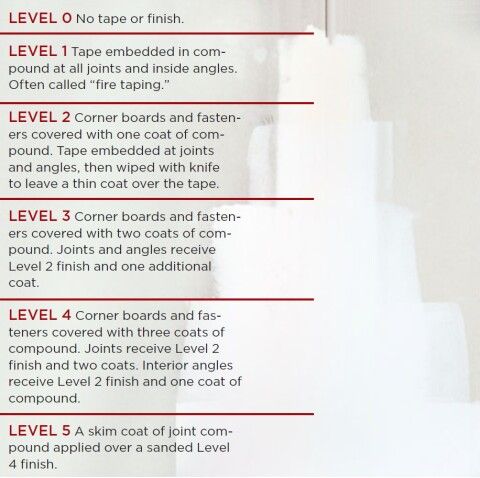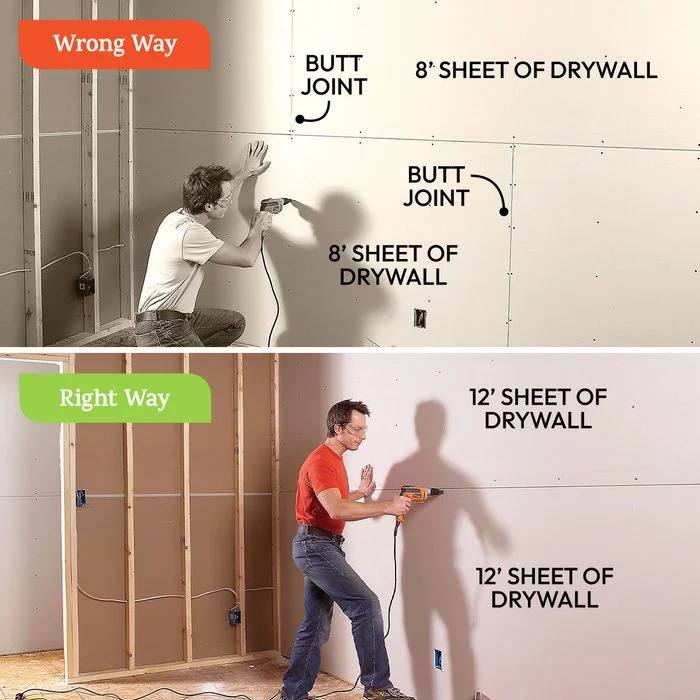- +86-13775339109
- Jessica@nq-fiberglass.cn
- No 61 Fangxian, Danyang, Jiangsu
Achieving a perfectly smooth and seamless wall surface is essential for a high-quality finish, and that’s where a Level 5 drywall finish comes in. Recognized as the highest standard in drywall finishing, Level 5 is the go-to choice for professionals and homeowners who demand flawless walls free from imperfections. This finish involves applying a skim coat over a Level 4 finish, creating an ultra-smooth surface ideal for high-end paint applications and specialty wall treatments.
A Level 5 finish is crucial in areas with strong lighting conditions, such as luxury homes, corporate offices, hospitals, and commercial spaces where glare and reflections can highlight even the most minor imperfections. It is also recommended for surfaces that receive glossy paint, metallic coatings, or decorative finishes, ensuring a pristine look without visible seams or texture inconsistencies.
Whether you’re a professional contractor or a DIY enthusiast looking to upgrade your drywall finish, understanding how to achieve a Level 5 finish can make all the difference. In this guide, we’ll explore what sets Level 5 apart, the tools and techniques required, and a step-by-step process to help you achieve a perfect, professional-quality drywall finish.

Drywall finishing is categorized into five levels, each designed for specific applications. Choosing the right level ensures the best results for unfinished spaces, textured walls, or high-end paint finishes.
Level 1 – Basic Coverage
Level 2 – Adds Tape, Suitable for Garages & Storage Areas
Level 3 – Ideal for Heavy Texture Applications
Level 4 – Standard for Painted Walls
Level 5 – The Ultimate Smooth Finish

Feature | Level 4 Drywall Finish | Level 5 Drywall Finish |
Smoothness | Smooth but may show minor imperfections | Ultra-smooth with a skim coat |
Best for | Standard painted walls | High-gloss or specialty finishes |
Lighting Suitability | Works well in standard lighting | Best for strong lighting & reflections |
Cost & Labor | Less time-consuming, more affordable | More expensive and labor-intensive |
When to Use | Regular rooms & office spaces | Luxury homes, commercial interiors, showrooms |
While Level 4 is sufficient for most painted walls, Level 5 is essential for achieving a truly flawless, professional-grade finish. If you want a surface free from visible seams or texture variations, investing in a Level 5 finish is the best choice.
A Level 5 drywall finish is the highest and most refined level of drywall finishing, providing an ultra-smooth, uniform surface that eliminates visible imperfections. What sets it apart from Level 4 is the application of a skim coat over the entire drywall surface. This additional step fills in minor imperfections, smoothing out joint compounds, paper texture, and sanding marks that might otherwise be visible under certain lighting conditions.
A Level 5 finish is often necessary for high-end interiors, luxury homes, and commercial spaces requiring pristine wall finishes. It is imperative when using glossy, semi-gloss, or metallic paints, which tend to highlight surface flaws more than flat paints.
A skim coat is a thin, even layer of diluted joint compound (drywall mud) applied across the entire drywall surface. This process smooths out imperfections, covers joints, and creates a consistent texture.
Why is a Skim Coat Important?
A skim coat can be applied using a trowel, roller, or airless sprayer, followed by sanding to achieve a polished, professional-grade finish.
When is a Level 5 Finish Necessary?
A Level 5 finish is not required for every project, but there are specific situations where it’s highly recommended:
Homeowners and contractors can make informed decisions about their drywall finishing needs by understanding when and why a Level 5 drywall finish is necessary.

Tool | Best for Professionals | Best for DIYers |
Taping Knives & Blades | Columbia, Level 5 Tools | Hyde, Wal-Board |
Drywall Roller | Wooster Pro, Purdy | Husky, Bates Choice |
Sanding Tools | Festool, Mirka (power sanders) | 3M, Hyde (manual sanders) |
Joint Compound | USG Sheetrock, CertainTeed | DAP, ProForm |
Primer | Zinsser, Benjamin Moore | Kilz, Behr |
Using high-quality tools and materials will make the Level 5 finish process easier and more efficient. For DIYers, manual tools and pre-mixed joint compounds offer cost-effective solutions, while professionals benefit from skimming blades, power sanders, and specialized rollers for speed and precision.
Contact us now to get the latest drywall tape brochure and start choosing the right drywall tape for your project.
A Level 5 drywall finish requires precision and patience, but following the correct steps can achieve a perfectly smooth surface ready for high-end painting or finishing. Below is a step-by-step guide to help professionals and DIYers alike.
💡 Pro Tip: Use paper tape for strength and mesh tape for more straightforward application in high-moisture areas.
💡 Pro Tip: Thin the compound slightly with water for a smoother application.
💡 Pro Tip: Use a drywall hawk to hold the compound for quicker application.
💡 Pro Tip: Avoid over-sanding, as it can expose drywall paper and cause uneven textures.
💡 Pro Tip: Avoid cheap primers, as they can lead to uneven absorption and visible imperfections.


Achieving a Level 5 drywall finish requires time, effort, and attention to detail, but the result is a flawless, smooth surface that enhances the quality of any space. Whether you’re working on high-end residential projects, commercial buildings, or areas with critical lighting, this finish ensures seamless walls perfect for painting and wall treatments.
To get the best results, invest in high-quality tools such as:
Following the steps can help you achieve a professional finish at home if you’re confident in your DIY skills. However, hiring a skilled drywall contractor for larger projects or high-visibility areas can ensure a perfect result without the hassle.
Ready to take on your next drywall project? Whether tackling it yourself or hiring a professional, a Level 5 finish is the gold standard for smooth, high-quality walls. Get started today!
Connect with an NQ expert to discuss your product needs and get started on your project.